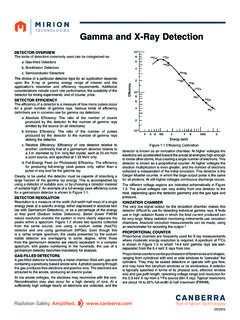Transcription of Five Fundamental Data Quality Practices - Pitney …
1 WHITE PAPER:Five Fundamental data Quality PracticesDATA Quality & data INTEGRATIOND avid PAPER: data Quality & data INTEGRATIONDATA Quality MANAGEMENT INCORPORATES A VIRTUOUS CYCLE IN WHICH CONTINUOUS ANALYSIS, OBSERVATION, AND IMPROVEMENT LEAD TO OVERALL IMPROVEMENT IN THE Quality OF ORGANIZATIONAL INFORMATION ACROSS THE BOARD. THE RESULTS OF EACH ITERATION CAN IMPROVE THE VALUE OF AN ORGANIZATION S data ASSET AND THE WAYS THAT data ASSET SUPPORTS THE ACHIEVEMENT OF BUSINESS OBJECTIVES. THIS CYCLE TURNS ON THE EXECUTION OF FIVE Fundamental data Quality MANAGEMENT Practices , WHICH ARE ULTIMATELY IMPLEMENTED USING A COMBINATION OF CORE data SERVICES. THOSE Practices ARE: data Quality ASSESSMENT data Quality MEASUREMENT INTEGRATING data Quality INTO THE APPLICATION INFRASTRUCTURE OPERATIONAL data Quality IMPROVEMENT data Quality INCIDENT MANAGEMENTBY ENABLING REPEATABLE PROCESSES FOR MANAGING THE OBSERVANCE OF data Quality EXPECTATIONS, THESE Practices PROVIDE A SOLID FOUNDATION FOR ENTERPRISE data Quality MANAGEMENT.
2 THIS PAPER DESCRIBES THESE Practices AND THEN LOOKS AT THE CORE data SERVICES UPON WHICH THESE Practices RELY. EACH SECTION WILL PROVIDE AN OVERVIEW OF THE PRACTICE AND REVIEW PROCESSES THAT ARE USED TO ACHIEVE THE DESIRED PRACTICE S OBJECTIVES. BY COMBINING GOOD data MANAGEMENT Practices WITH THE RIGHT TECHNOLOGY PLATFORM, AN ORGANIZATION CAN FULLY INCORPORATE data Quality INTO THE ENTERPRISE Fundamental data Quality Practices2 INTRODUCTIONI dentify & assess thedegree to which poordata Quality impedesbusiness business-relateddata Quality rules, performmeasurements, and setperformance , monitor, and remediate when Quality of data is Quality improvementprocesses that remediateprocess data qualityimprovement methodsand processes Virtuous Cycle of data QualityData Quality management incorporates a virtuous cycle in which continuous analysis, observation, and improvement lead to overall improvement in the Quality of organizational information across the board (see below).
3 The objective of this cycle is to transition from being an organization in which the data stewards react to acute data failures into an organization that proactively controls and limits the introduction of data flaws into the turn, this virtuous cycle incorporates five Fundamental data Quality management Practices , which are ultimately implemented using a combination of core data services. Those Practices are:1. data Quality assessment, as a way for the practitioner to understand the scope of how poor data Quality affects the ways that the business processes are intended to run, and to develop a business case for data Quality management;2. data Quality measurement, in which the data Quality analysts synthesize the results assessment and concentrate on the data elements that are deemed critical based on the selected business users needs.
4 This leads to the definition of performance metrics that feed management reporting via data Quality scorecards;3. Integrating data Quality into the application infrastructure, by way of integrating data requirements analysis across the organization and by engineering data Quality into the system development life cycle;4. Operational data Quality improvement, where data stewardship procedures are used to manage identified data Quality rules, conformance to acceptability thresholds, supported by5. data Quality incident management, which allows the data Quality analysts to review the degree to which the data does or does not meet the levels of acceptability, report, log, and track issues, and document the processes for remediation and Quality MANAGEMENT Practices CAN IMPROVE THE VALUE OF AN ORGANIZATION S data ASSET AND THE WAYS IT SUPPORTS THE ACHIEVEMENT OF BUSINESS OBJECTIVES3 The Virtuous Cycle of data Quality , these Practices establish the foundation of the data Quality management program, since they enable a repeatable process for incrementally accumulating metrics for data Quality that will contribute to populating a data Quality scorecard, a data Quality dashboard, as well as driving proactive data Quality management.
5 In turn, trained staff must employ core data services to make these Practices Quality AssessmentSmart organizations want to maximize their investment in data Quality management, and this means understanding how poor data Quality negatively impacts the achievement of business objectives. By quantifying that value gap, the data Quality practitioner can determine the cost-effectiveness, feasibility, and speed of any proposed data Quality improvement. Understanding the impacts of data flaws within the context of the business helps provides a yardstick to measure and prioritize emergent data an example, there may be some suspicion of increased mailing and shipping costs due to inaccurate or invalid addresses. This suspicion may be introduced by a perception of a large number of undelivered shipped items returned.
6 However, invalid or incorrect addresses not only incurs direct costs associated with returned items; analytical applications used to profile customer purchase patterns by region are skewed, which can impact the effective execution of marketing campaigns and regional sales promotions. The data Quality assessment process can be used to quantify those costs and impacts and determine what percentage of those costs is directly attributed to addresses that can be practice incorporates processes for identifying, assessing, quantifying, and prioritizing data Quality issues: Business Impact Analysis This process is intended to guide the analysts by noting any potential data -related issues that increase costs, reduce revenues, impact margins, or introduce inefficiencies or delays in business activities.
7 In essence, the objective is to identify any negative business impacts that can be attributed to data of unacceptable Quality . Identifying the location and magnitude of critical paint points in the various business processes helps to scope the business requirements for information for the assessment, narrow the list of data sets that will be examined, and guide the identification of data Quality requirements. data Quality Assessment using data Profiling This process performs a bottom-up review of the actual data as a way to isolate apparent anomalies that may be real data flaws. Using data profiling and other statistical and analysis techniques, the analysts can identify these apparent anomalies, which can be subjected to further scrutiny when reviewed with business data consumers. data Quality Assessment Anomaly Review During this process, the data Quality analysts review the discovered apparent anomalies with business data consumers to see if there are any links between the data errors and any potential business impacts.
8 By distinguishing those data errors that have material impact from the irrelevant ones, the team can prioritize issues based on business impact, and explore ways that the issues can be resolved. Define Measures of data Quality Correlating businessimpacts to data issues through defined business rules provides the method of measurement, and these measures can be used to baseline levels of data Quality as well as continuous observation and inspection within an information production flow. This process guides the consideration of data measures to be performed and the technology requirements for collecting those PAPER: data Quality & data INTEGRATIONFive Fundamental data Quality Practices Prepare DQ Assessment Report The process of documenting the correlation of business impacts with data anomalies along with potential methods of measurement all within a single report provides a fix-point for the business data consumers regarding the current state of data Quality , and provides the baseline for considering target levels for Quality Measurement and MetricsHaving used an assessment to identify areas for data Quality improvement, the next step is to synthesize the results of the assessment to narrow the scope by concentrating on the data elements that are deemed critical based on the business users needs.
9 Defining performance metrics for reporting using a data Quality scorecard requires processes for the determination of dimensions and corresponding units of measure and acceptability thresholds, and the presentation of quantifiable metrics that are relevant to the business data continue our example, once we have determined using the data Quality assessment process that problems with addresses impacts the ability to optimally deliver shipped items, we can narrow the focus for data Quality measurements to specific metrics associated with the critical data elements that contribute to the delivery failures. Some items might not be delivered due to missing street information, while others might have incorrect ZIP codes. The first problem is one of completeness, while the second of consistency with defined reference data .
10 Measurements associated with the data Quality dimensions of completeness and consistency can be defined using data Quality validation rules for each address, and the resulting measures can be presented as metrics to the business users in the fulfillment department to estimate how invalid addresses are related to increased of this practice include: Select Dimensions of data Quality A dimension of data Quality describes a context and a frame of reference for measurement along with suggested units of measurement. Commonly measured dimensions of data Quality include completeness, consistency, timeliness, and uniqueness, although the range of possible dimensions is only limited by the ability to provide a method for measurement. During this process, the data Quality analysts select the dimensions that are to be measured and consider the tools, techniques, and skills needed to capture the measurements.








